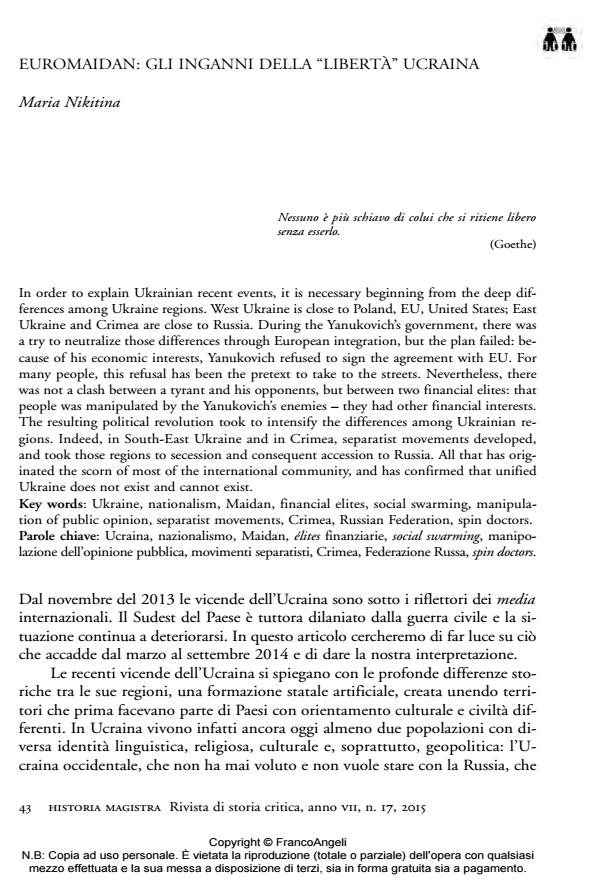Euromaidan: gli inganni della "libertà" ucraina
Journal title HISTORIA MAGISTRA
Author/s Maria Nikitina
Publishing Year 2015 Issue 2015/17 Language Italian
Pages 20 P. 43-62 File size 125 KB
DOI 10.3280/HM2015-017005
DOI is like a bar code for intellectual property: to have more infomation
click here
Below, you can see the article first page
If you want to buy this article in PDF format, you can do it, following the instructions to buy download credits

FrancoAngeli is member of Publishers International Linking Association, Inc (PILA), a not-for-profit association which run the CrossRef service enabling links to and from online scholarly content.
In order to explain Ukrainian recent events, it is necessary beginning from the deep differences among Ukraine regions. West Ukraine is close to Poland, EU, United States; East Ukraine and Crimea are close to Russia. During the Yanukovich’s government, there was a try to neutralize those differences through European integration, but the plan failed: because of his economic interests, Yanukovich refused to sign the agreement with EU. For many people, this refusal has been the pretext to take to the streets. Nevertheless, there was not a clash between a tyrant and his opponents, but between two financial elites: that people was manipulated by the Yanukovich’s enemies - they had other financial interests. The resulting political revolution took to intensify the differences among Ukrainian regions. Indeed, in South-East Ukraine and in Crimea, separatist movements developed, and took those regions to secession and consequent accession to Russia. All that has originated the scorn of most of the international community, and has confirmed that unified Ukraine does not exist and cannot exist.
Keywords: Ucraina, nazionalismo, Maidan, élites finanziarie, social swarming, manipolazione dell’opinione pubblica, movimenti separatisti, Crimea, Federazione Russa, spin doctors
Maria Nikitina, Euromaidan: gli inganni della "libertà" ucraina in "HISTORIA MAGISTRA" 17/2015, pp 43-62, DOI: 10.3280/HM2015-017005